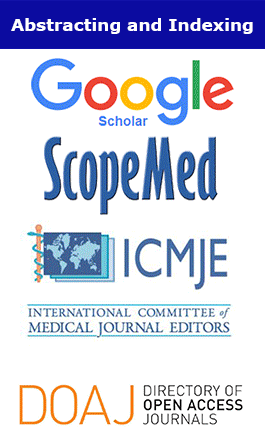Comparison of plate and nail fi xation for acute humeral shaft fracture of our experience
Yi Lune Huang, Chi Rung Chung, Po Chung Huang, Wei Tin Lin, Chung Da Wu
Abstract
Introduction: Plating fixation for treatment of humeral shaft fracture is a gold standard method in old days. Due to the progression of surgical technique and implant material, nailing fixation for humeral shaft fracture seems to also be a reasonable choice. However, different outcomes are reported. Hence, we make a retrospective study of our cases to compare and analyze plating and nailing system for humeral shaft fracture. Materials and Methods: From January 2007 to February 2012, all patients who are diagnosed humeral shaft fracture classified with Orthopedic Trauma Association classification, treated with nailing or plating fixation, and complete the follow-up are collected. A total of 53 patients treated with plating and 22 treated with nailing are included. Union rate and complications are recorded. Causing and consequent management for complications are also recorded and analyzed. Results: All the patients were observed within an average of 21.7 months. Union rate of plating system in our study is 94.3% (50/53), as mentioned in established data. However, the union rate of nailing system is only 72.7% (16/22) and that is lower than we used to get from established data. Revision is applied for all three non-union patients in the plating group and three in the nail group. Open reduction internal fixation with plating and autogenous bone graft are applied for patients receiving revision, and all of them got union. Complications are as well as established data mentioned, radial nerve palsy or paresis is the main problems for plating system (6/53). Although radial nerve palsy is much less frequent happened in the nailing group, but fracture site distraction, and shoulder pain that rarely happened in the plating system take a large proportion in the nailing system. Conclusion: Plating system for humeral shaft fracture remains the most secure method as high union rate and well-known complications. Nailing systems, though gets a higher proportion to use, there are still some problems needed to be solved, especially lower union rate and operative site complications.



